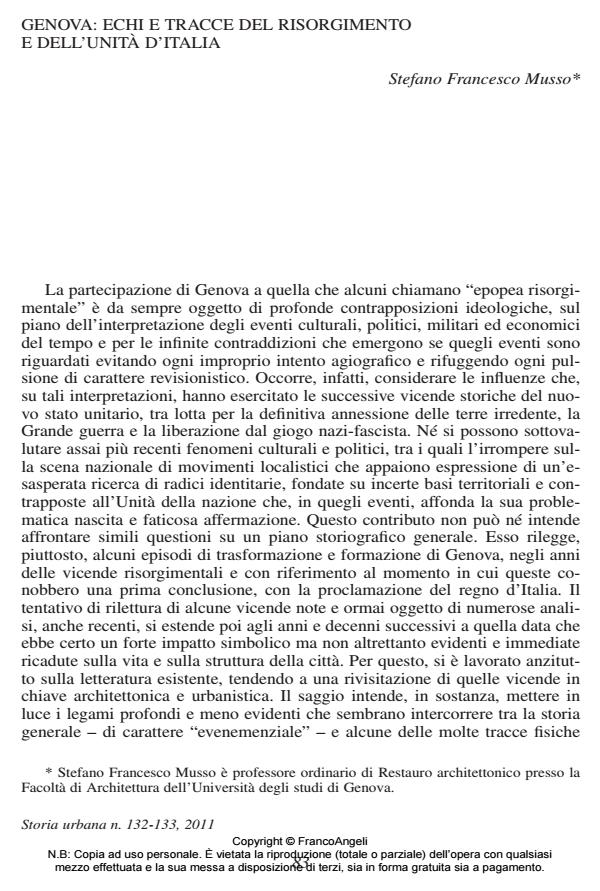Genova: echi e tracce del Risorgimento e dell'Unità d'Italia
Journal title STORIA URBANA
Author/s Stefano Francesco Musso
Publishing Year 2012 Issue 2011/132
Language Italian Pages 27 P. 83-109 File size 2568 KB
DOI 10.3280/SU2011-132004
DOI is like a bar code for intellectual property: to have more infomation
click here
Below, you can see the article first page
If you want to buy this article in PDF format, you can do it, following the instructions to buy download credits

FrancoAngeli is member of Publishers International Linking Association, Inc (PILA), a not-for-profit association which run the CrossRef service enabling links to and from online scholarly content.
The essay underlines the deep and less clear relationships between the wide-ranging history of the Italian Risorgimento (as Genoa is meant to be - also thanks to some personalities such as Nino Bixio, Goffredo Mameli an Giuseppe Mazzini - a sort of "ideal Homeland") and some of the most physical traces which this history has left within the urban structure of the city. The author proposes a different reading of some experiences dealing with the transformation or the development of the city during the Risorgimento, with particular re- ference to the period in which the Reign of Italy was proclaimed: the Garibaldi Street, for example, was designed to connect - across the Fontane Marose Square - the sixteenth- century Aurea Street, residence of the ancient oligarchic class, to new city centre, organized around the De Ferrari Square. The new street was realized by demolishing, with a surgical precision, the surrounding medieval neighbourhood. On the contrary, the new urban junction, the Corvetto Square, with the two monuments representing Giuseppe Mazzini and Vittorio Emanuele II, is an emblematic example of the design of new celebratory spaces. The different reading of well-known experiences, which the author proposes, also concerns to the period after the unification of Italy (until the first years of the twentieth century). This event, in fact, had a great impact regarding to symbolic issues, but it had not equivalent, immediate consequences on the urban structure of the city which, on the contrary, experienced some diffuse and traumatic demolitions, mutilations and displacement of ancient monuments.
Keywords: Genoa - Homeland - Urban transformations - Commemorative monuments
Stefano Francesco Musso, Genova: echi e tracce del Risorgimento e dell'Unità d'Italia in "STORIA URBANA " 132/2011, pp 83-109, DOI: 10.3280/SU2011-132004